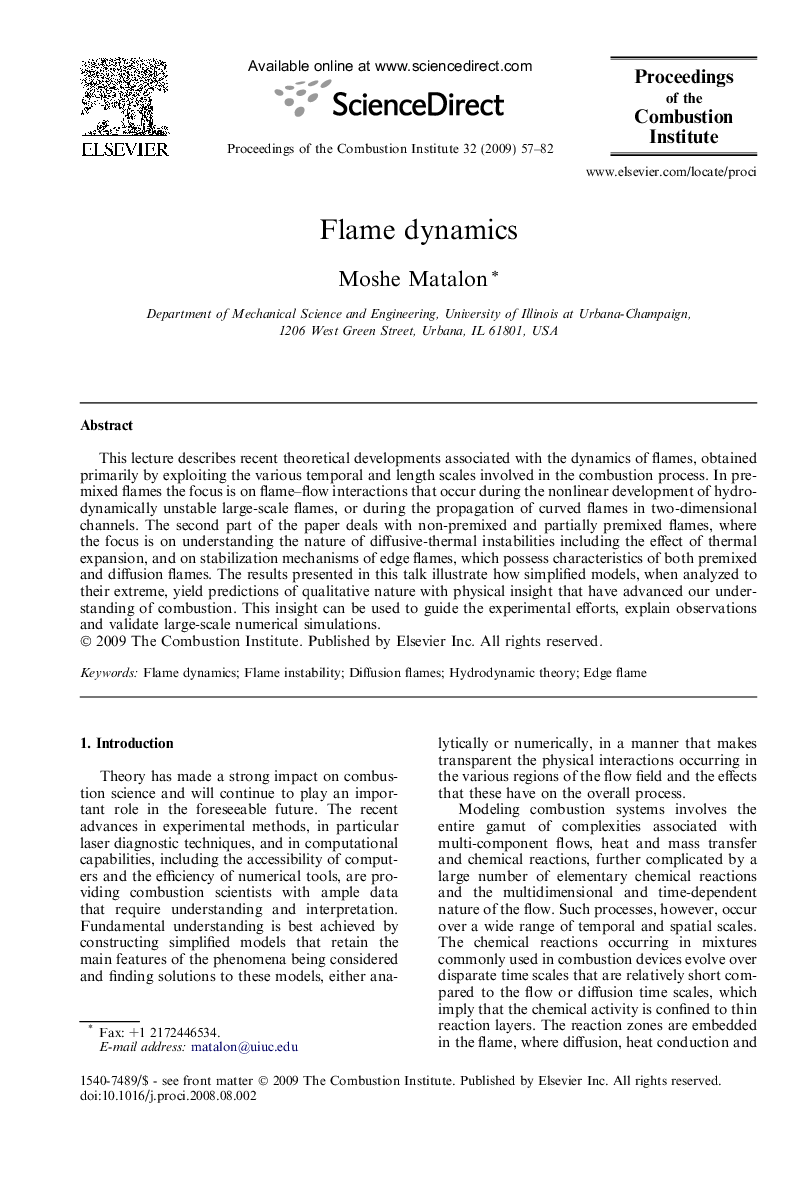| Article ID | Journal | Published Year | Pages | File Type |
|---|---|---|---|---|
| 6679391 | Proceedings of the Combustion Institute | 2009 | 26 Pages |
Abstract
This lecture describes recent theoretical developments associated with the dynamics of flames, obtained primarily by exploiting the various temporal and length scales involved in the combustion process. In premixed flames the focus is on flame-flow interactions that occur during the nonlinear development of hydrodynamically unstable large-scale flames, or during the propagation of curved flames in two-dimensional channels. The second part of the paper deals with non-premixed and partially premixed flames, where the focus is on understanding the nature of diffusive-thermal instabilities including the effect of thermal expansion, and on stabilization mechanisms of edge flames, which possess characteristics of both premixed and diffusion flames. The results presented in this talk illustrate how simplified models, when analyzed to their extreme, yield predictions of qualitative nature with physical insight that have advanced our understanding of combustion. This insight can be used to guide the experimental efforts, explain observations and validate large-scale numerical simulations.
Related Topics
Physical Sciences and Engineering
Chemical Engineering
Chemical Engineering (General)
Authors
Moshe Matalon,
